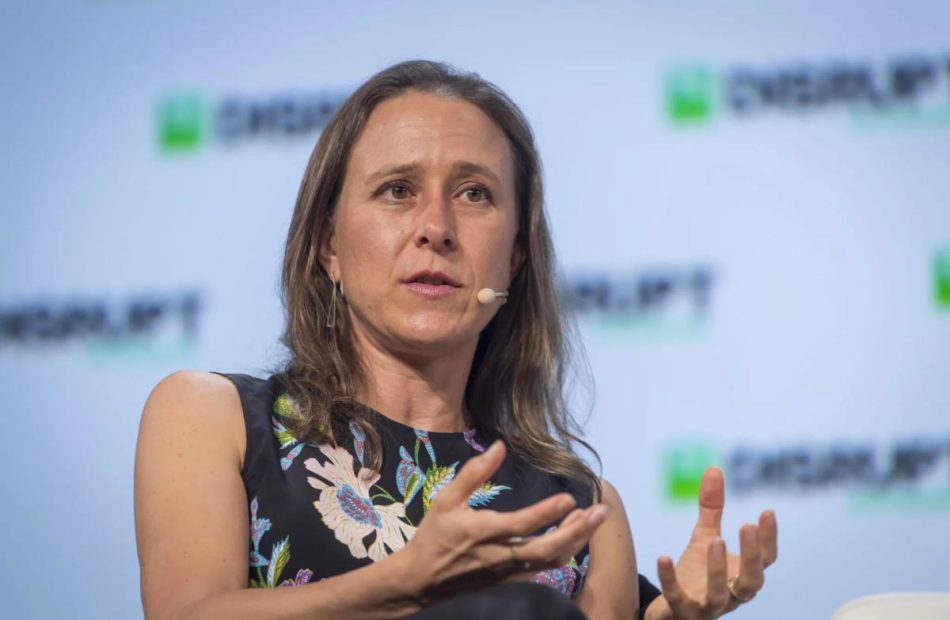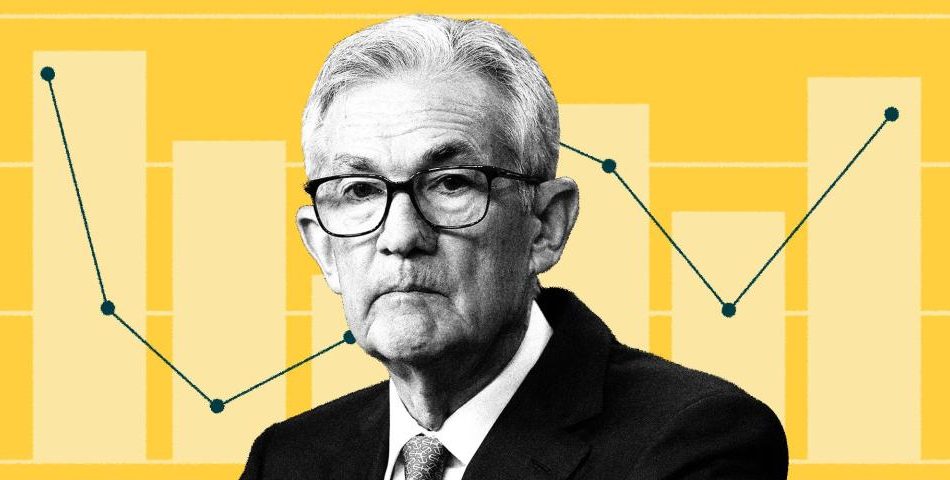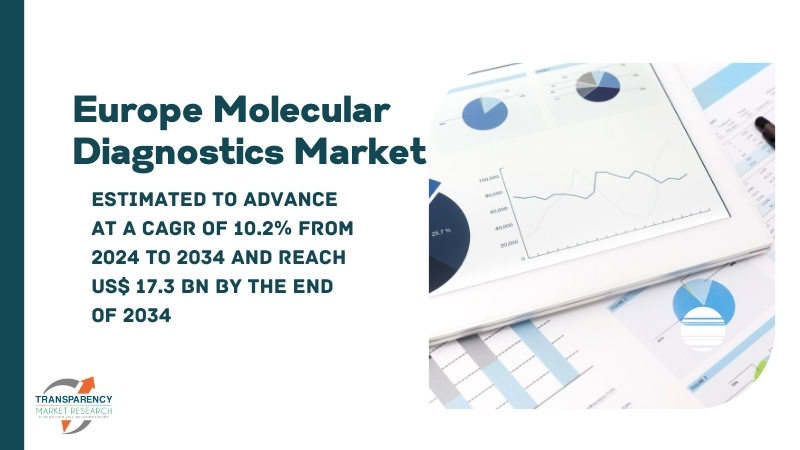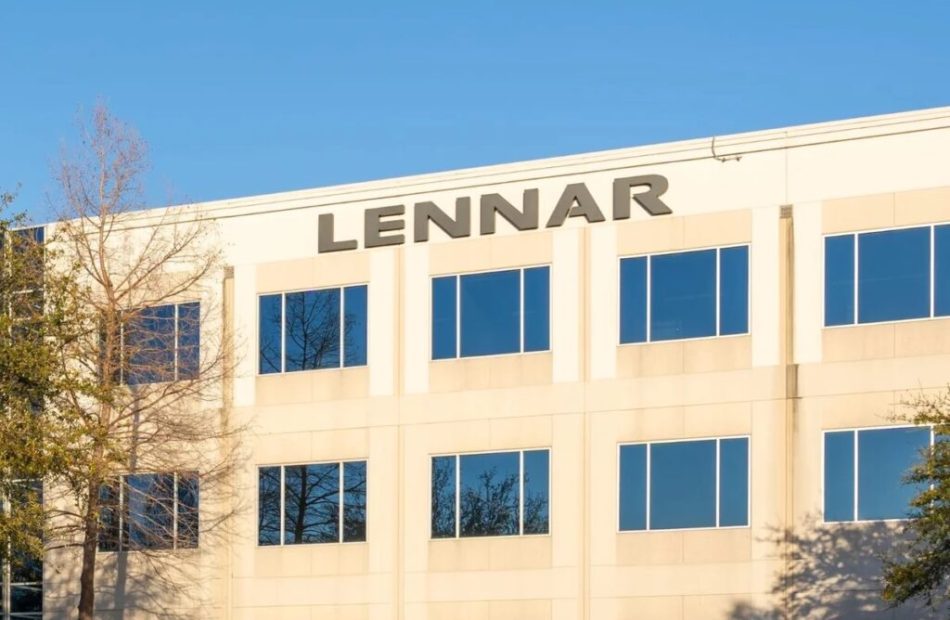EXCLUSIVE: Fed In 'Pro-Growth Mode' Will Drive Small Cap Performance, Lazard Expert Says
A Federal Reserve focused on supporting the economy through rate cuts is a robust bullish catalyst for U.S. small-cap stocks, according to Sean Gallagher, global head of Lazard’s small-cap equity platform.
In an exclusive interview with Benzinga, Gallagher reaffirmed his strong optimism that small caps will close the performance gap with large caps that has widened in recent years.
“The Fed is in ‘pro-growth mode,’ and easing financial conditions are very helpful for many parts of the economy,” he stated.
“I think laggard areas like small caps are a lot more attractive.” While Gallagher noted that the broader market isn’t cheap—given that the S&P 500 trades at over 20 times its earnings—small caps remain comparatively undervalued, trading at half the S&P 500’s price-to-earnings ratio.
Following the Fed’s bold decision to slash rates by 50 basis points to 4.75-5%, the Russell 2000, as tracked by the iShares Russell 2000 ETF IWM, had a volatile reaction on Wednesday, closing flat for the day.
Yet, as investors digest the decision, small caps rose by 1.7% on Thursday, outperforming larger-cap counterparts.
Don’t miss out on this unparalleled opportunity:
Gallagher reiterated his call of “at least 30% upside on a 12 month basis,” for the Russell 2000.
“There’s no question” that even the group of non-earners within the small-cap index could benefit significantly from aggressive rate cuts, such as the 50 basis point reduction, he added.
As we enter what he describes as “a pretty aggressive rate-cutting cycle,” the market could expand beyond the heavily concentrated Magnificent Seven, bringing small caps into focus for retail investors.
The expert maintains a constructive outlook on the economy, dismissing fears of a slowdown. While he acknowledges some labor market softness, he doesn’t view it as a sign of fundamental weakness.
Fed To Cut By 25Bps At Every Meeting
Gallagher anticipates 25 basis point rate cuts at each upcoming Fed meeting. “We’re in a much better place with inflation and are gradually getting back to trend,” he said.
He foresees a steady series of 25 basis point cuts following the initial front-loaded 50 basis point cut.
“I think we’re in a ‘good is good and bad is bad’ kind of mindset going forward,” Gallagher said. Positive economic data will benefit the markets, whereas negative data, particularly on the labor market front, may disappoint investors.
Small Caps Poised To Play Catch-Up, Biotech In Focus
Gallagher believes cyclical sectors are set to rise here.
He is particularly optimistic about companies with lean inventories, solid balance sheets, and free cash flow, especially those enduring the current tough cycle. “When demand comes back, you’ll see meaningful appreciation,” he said.
Gallagher also sees potential in the biotech sector, noting that higher rates have been restrainting funding for years.
“We’re definitely active in healthcare, looking for opportunities with companies that have diversified pipelines, solid balance sheets, and are poised to benefit when biotech funding picks up,” he added.
Don’t miss the opportunity to dominate in a volatile market at the Benzinga SmallCAP Conference on Oct. 9-10, 2024, at the Chicago Marriott Downtown Magnificent Mile.
Get exclusive access to CEO presentations, 1:1 meetings with investors, and valuable insights from top financial experts. Whether you’re a trader, entrepreneur, or investor, this event offers unparalleled opportunities to grow your portfolio and network with industry leaders.
Secure your spot and get your tickets today!
Read Next:
Photo: Shutterstock
© 2024 Benzinga.com. Benzinga does not provide investment advice. All rights reserved.
Gary Gensler-Led SEC Invented The Term 'Digital Asset Security' Out Of Thin Air, Says Democratic Congressman Ritchie Torres
Rep. Ritchie Torres (D-N.Y.) raised concerns over the usage of the term “digital asset security” by the U.S. Securities and Exchange Commission (SEC,) questioning its legal basis and origin.
What Happened: During a recent congressional hearing, the Democratic Congressman asked Daniel Gallagher, former SEC commissioner, and currently the Chief Legal Officer at Robinhood, if he knew about the existence of such a term in any law enacted by the Congress or in any rule promulgated by the SEC. Gallagher responded in the negative.
“If it comes from neither statute nor rule, then where does it come from,” Torres wrote in an X post. “The SEC invented the term out of thin air.”
The hearing, entitled “Dazed and Confused: Breaking Down the SEC’s Politicized Approach to Digital Assets,” featured other market participants like Teddy Fusaro, president of Bitwise Asset Management, as witnesses.
Why It Matters: This is not the first time Torres has challenged the SEC’s stance on digital assets. In a previous correspondence with SEC Chair Gary Gensler, Torres urged the agency to reconsider its aggressive approach towards cryptocurrencies.
He questioned whether the SEC intended to reevaluate its hardline stance on cryptocurrencies, following its unsuccessful lawsuit against Ripple Labs, where the court determined that XRP XRP/USD does not qualify as a security.
The SEC invited criticism from the cryptocurrency community after labeling as many as 12 tokens on Binance as securities, as part of a lawsuit against the cryptocurrency exchange in June 2023.
However, in a recent filing, the regulator “regretted any confusion” caused by the usage of the term “crypto asset. securities.”
Did You Know?
Disclaimer: This content was partially produced with the help of Benzinga Neuro and was reviewed and published by Benzinga editors.
Photo courtesy: Flickr
Market News and Data brought to you by Benzinga APIs
© 2024 Benzinga.com. Benzinga does not provide investment advice. All rights reserved.
1 Stock-Split Stock Set to Join Nvidia, Apple, Microsoft, Amazon, Alphabet, and Meta In the $1 Trillion Club
The U.S. economy has a stellar track record of producing the world’s most valuable companies. United States Steel became the first $1 billion company in 1901. General Motors then rode the automotive revolution to become the first $10 billion company in 1955. In 2018, Apple became the first to cross the $1 trillion milestone thanks to the success of its iPhone.
Apple remains the world’s largest company with a $3.3 trillion market capitalization, but it has since been joined in the trillion-dollar club by tech giants Nvidia, Microsoft, Amazon, Meta Platforms, and Alphabet.
Broadcom (NASDAQ: AVGO) might be set to join them. It’s currently valued at $761 billion, so its stock only needs to gain 31.4% from here to earn its membership. Here’s why I think it will happen.
Broadcom stock has soared recently, prompting a split
Broadcom was originally a semiconductor and electronics company, but since merging with Avago Technologies in 2016, it has been on an acquisition spree. It spent a total of nearly $100 billion buying semiconductor equipment company CA Technologies in 2018, cybersecurity giant Symantec in 2019, and cloud software developer VMware in 2023.
The acquisitions have propelled Broadcom stock to a 465% gain over the last five years and, earlier this year, it soared past $1,800, which made it somewhat inaccessible to investors with small portfolios. As a result, Broadcom’s management team decided to execute a 10-for-1 stock split, which increased the number of shares in circulation tenfold and reduced the price per share by a proportional amount.
The split went into effect on July 12, so investors can now buy one share of Broadcom for just $162 as of this writing. That spells an opportunity because the company’s growing presence in artificial intelligence (AI) could drive further upside from here.
A multifaceted artificial intelligence company
Broadcom has placed a heavy focus on AI across its organization over the past year to capture what could be one of the most valuable technological revolutions in history.
On the semiconductor side, Broadcom makes data center accelerators, which are specially designed chips for AI development. It also supplies networking equipment for data centers, including Ethernet switches that regulate how quickly data travels from one point to another. High-quality switches are critical to AI infrastructure, because data needs to rapidly flow through tens of thousands of graphics processors (GPUs) and accelerators.
During the recent third quarter of fiscal 2024 (ended Aug. 4), Broadcom said its custom AI accelerators segment grew by three-and-a-half times compared to the year-ago period thanks to surging demand from hyperscalers (which typically includes Microsoft, Amazon, and Alphabet). The company also said its Tomahawk 5 and Jericho3-AI switches delivered fourfold sales growth compared to the year-ago period.
Outside of the semiconductor business, Symantec is weaving AI into its cybersecurity products. For example, it launched SymantecAI earlier this year, which is a chatbot capable of answering users’ queries about their endpoint protection.
Then, there is VMware, which serves as the software layer of the data center to help organizations optimize their infrastructure. They can use VMware to create virtual machines, meaning multiple employees can plug into the same server to utilize all of its capacity. That ensures no computing capacity goes to waste, which is critical right now due to the short supply of high-powered GPUs and data center hardware.
Broadcom expects to deliver $51.5 billion in total revenue for the entirety of fiscal 2024, which will wrap up at the end of October. The company’s guidance initially suggested $11 billion of that would be attributable to AI across its businesses, but it just raised that estimate to $12 billion, which highlights the significant momentum in this emerging space.
Broadcom’s (mathematical) path to the $1 trillion club
As I touched on at the top, Broadcom has a market cap of $761 billion right now, so its stock only needs to gain 31.4% from here to place the company in the $1 trillion club.
The company isn’t consistently profitable on a GAAP basis, so it can’t be valued using the traditional price-to-earnings (P/E) ratio. However, we can value it using the price-to-sales (P/S) ratio, which divides its market cap by its annual revenue.
Broadcom currently trades at a P/S ratio of 16. If that number remains constant, the company simply has to grow its annual revenue by 31.4% to justify its entry into the $1 trillion club. Wall Street expects Broadcom’s revenue to grow by 17.2% in fiscal 2025, which won’t be enough, but it could get there in fiscal 2026 if it can grow by that amount again.
There is a caveat. Although Broadcom’s P/S ratio is down from its peak of around 19, it’s still very expensive compared to its average of 8.7 over the last five years:
It’s clear why investors are willing to pay a premium for the stock right now — Broadcom’s AI semiconductor products are delivering explosive growth, and its acquisitions are adding a tremendous amount of value. However, there is no guarantee investors will be receptive to such a high P/S ratio over the long term, and a reduction back to its five-year average could add years to Broadcom’s quest to join the $1 trillion club.
Therefore, while Broadcom will be a spectacular stock to own during the AI revolution, investors should maintain a very long-term outlook (perhaps of a decade or more) if they buy it today. That will give the company plenty of time to grow into its current valuation.
Should you invest $1,000 in Broadcom right now?
Before you buy stock in Broadcom, consider this:
The Motley Fool Stock Advisor analyst team just identified what they believe are the 10 best stocks for investors to buy now… and Broadcom wasn’t one of them. The 10 stocks that made the cut could produce monster returns in the coming years.
Consider when Nvidia made this list on April 15, 2005… if you invested $1,000 at the time of our recommendation, you’d have $708,348!*
Stock Advisor provides investors with an easy-to-follow blueprint for success, including guidance on building a portfolio, regular updates from analysts, and two new stock picks each month. The Stock Advisor service has more than quadrupled the return of S&P 500 since 2002*.
*Stock Advisor returns as of September 16, 2024
John Mackey, former CEO of Whole Foods Market, an Amazon subsidiary, is a member of The Motley Fool’s board of directors. Suzanne Frey, an executive at Alphabet, is a member of The Motley Fool’s board of directors. Randi Zuckerberg, a former director of market development and spokeswoman for Facebook and sister to Meta Platforms CEO Mark Zuckerberg, is a member of The Motley Fool’s board of directors. Anthony Di Pizio has no position in any of the stocks mentioned. The Motley Fool has positions in and recommends Alphabet, Amazon, Apple, Meta Platforms, Microsoft, and Nvidia. The Motley Fool recommends Broadcom and recommends the following options: long January 2026 $395 calls on Microsoft and short January 2026 $405 calls on Microsoft. The Motley Fool has a disclosure policy.
1 Stock-Split Stock Set to Join Nvidia, Apple, Microsoft, Amazon, Alphabet, and Meta In the $1 Trillion Club was originally published by The Motley Fool
Every single member of the board just resigned from DNA tester 23andMe
Following a monthslong battle over CEO Anne Wojcicki’s plans to take 23andMe private, all seven independent members of its board resigned en masse Tuesday.
The move is almost certainly the final nail in the coffin for the embattled company known for its mail-order DNA-testing kit. Since going public via merger with a special purpose acquisition company (SPAC) in 2021, 23andMe has never turned a profit. Its price on IPO day was $10; so far in 2024, it has yet to reach a $1 valuation. Following the resignation of all its independent directors Tuesday, the stock fell to its rock bottom: $0.30. (As of midday Wednesday, it’s back to $0.36.)
The board includes Sequoia Capital’s Roelof Botha as well as Neal Mohan, who took the helm as CEO of YouTube last year after Susan Wojcicki, Anne’s late sister, stepped down.
“After months of work, we have yet to receive from you a fully financed, fully diligenced, actionable proposal that is in the best interests of the non-affiliated shareholders,” Botha, Mohan et al wrote in a letter addressed to Wojcicki. “While we continue to wholeheartedly support the Company’s mission and believe deeply in the value of the personalized health and wellness offering that you have articulated, it is also clear that we differ on the strategic direction for the Company going forward.”
Due to that difference—and the fact that Wojcicki controls 49% of 23andMe votes—they resigned. Wojcicki is now the only board member left.
In an internal memo Wojcicki circulated shortly after the mass resignation, she said the decision left her “surprised and disappointed.” But despite the pressure, she’s bullish on taking the company private, saying it’s “still the best plan for the company.” She’s now “immediately” on the hunt for new independent directors who support that plan, and said more updates would follow on Thursday.
The company has been flailing this year. Last month, in a recent bid for cash, it began writing prescriptions for GLP-1 weight loss drugs like Ozempic and Wegovy through its telehealth subsidiary, Lemonaid Health.
It’s not enough. DNA test sales have dropped off, a research collaboration with GlaxoSmithKline concluded last year, and a recent data breach impacted nearly 7 million customers, which led to a rush of lawsuits and a $30 million settlement. Once valued at $3.5 billion, 23andMe’s market cap now hovers below $200 million.
Nonetheless, the drug development and genetic sequencing that the firm has been throwing its weight behind will eventually bear fruit, Wojcicki told CNN in February. “The vision and where we’re going is solid, but the path to get there is more turbulent.” Unfortunately, the board is no longer willing to stay the course.
This story was originally featured on Fortune.com
The Fed is following its 1995 playbook — and that's great news for stocks and the economy
-
The Fed looks like it’s following the same path it did in 1995, according to TS Lombard.
-
That sets the stage for the economy to avoid a recession as it did in the 90s, the firm said.
-
It’s also great news for stocks, as the S&P 500 more than doubled in value that decade.
The Fed is following a 30-year-old playbook with its interest rate moves — and that’s good news for the US economy, according to TS Lombard.
The firm pointed to the central bank’s 50 basis point cut to the federal fund rate this week. That was exactly what investors were looking for, and it could lay the groundwork for a booming stock market and economy, according to Dario Perkins, the firm’s managing director of global macro.
He notes that the Fed’s latest rate cut has created a parallel to what central bankers did in 1995, when Fed officials eased the Federal funds rate from a peak of 6% to around 4.75% over three years. That took interest rates back to a neutral level, stave off a recession, and ultimately spark a new economic boom.
By 1998, GDP growth had accelerated from 4.4% to nearly 5%. Meanwhile, the S&P 500 soared 125% by the end of the Fed’s cutting cycle, according to data from the American Institute for Economic Research.
Fed officials look on track to pull off the same maneuver, Perkins suggested, attributing this week’s jumbo-sized rate cut to central bankers’ belief that they were further away from the neutral rate than they were several decades ago.
“Our view is that this cutting cycle will probably play out like Greenspan’s mid-course ‘re-calibration’ of policy in the mid-1990s,” Perkins said in a note on Wednesday. “Even if the US labour market deteriorates more than we expect and the Fed falls behind the curve, there is no real threat of a deep recession.”
Stocks soared a day after the big rate cut. Despite wobbling in the hours after the Fed’s rate move, the major indexes hit fresh records in Thursday trades.
“We think the soft landing is still very much in play,” Perkins added. “And while the danger of the Fed falling behind the curve is real, we think the repercussions would be manageable. It is hard to foresee anything worse than a mild recession,” he later wrote.
Some forecasters are still wary of the Fed’s latest policy move due to concerns that cutting interest rates too quickly could ignite a fresh bout of inflation. The market, though, has mostly shrugged off that risk, with one-year forward inflation expectations remaining just above 2% in September, according to Cleveland Fed data.
Read the original article on Business Insider
RMD Timing: Is It Better to Withdraw Early or Late in the Year?
People often think they don’t have any choice about taking the IRS-mandated required minimum distributions from their retirement accounts – but they do. While you can’t skip making the withdrawal they can choose how to time it in a way that works best for their individual financial situation.
Required minimum distributions – RMDs, for short – kick in at age 73 and apply to all of your tax-deferred retirement accounts, such as regular Individual Retirement Accounts and 401(k) accounts. Neither the original principal or the gains in those accounts ever have been taxed, and the IRS is willing to wait just so long before the agency insists on taking its bite of the money.
You, however, can choose when and how to take the distribution, whether that’s at the beginning of the year, the end of the year or in a stream of monthly, quarterly or semi-annual payments. Each has its pluses and minuses, but none will change the amount of your RMD – that’s based on the value of your retirement accounts at the end of the previous year and your age.
A financial advisor can help you structure your RMDs to your best advantage.
Ways to Schedule Your RMDs
Early in the year lump sum
The “just get it over with” approach works for people who need the cash flow during the year and helps avoid needing to borrow money or put expenses on credit cards and paying the resulting interest. You also can put the cash into another investment right away, as long as it’s not a tax-advantaged retirement account.
On one hand, this approach guarantees that you won’t forget to take your RMD but it also means all that money won’t be generating any additional gains in your retirement account, although you can deposit some or all of the cash to earn interest. Another potential downside is that if tax laws change on RMDs – such as in March 2020 when Congress eliminated RMDs for that year because of the pandemic – you’ll have already taken your distribution and miss out on that break.
Talk to a financial advisor to weigh the opportunity costs of your investment options.
Monthly, Quarterly, or Semi-Annually
This approach smooths your cash flow all year if you’re using the money to pay your living expenses. It also keeps some of your RMD money in your investments for part of most of the year to generate new gains. With a quarterly distribution schedule, you can time the distributions and use the cash to cover your quarterly estimated tax payments on other income, as well as the RMD itself.
Late in the year lump sum
If you don’t need cash to cover expenses earlier in the year, leaving your RMDs until the end of the year maximizes the potential investment returns on the RMD money, while also leaving the option to take advantage of any changes to RMD rules that take place during the year. You also can withdraw a lump sum large enough to cover all your income tax for the year.
Tax Considerations
Whatever schedule you use for RMDs won’t change the amount of taxes due on the distribution. However, your RMD schedule can affect your other taxes. If you make quarterly estimated tax payments based on your RMD amount and all your other taxable income, you’ll lose the use of your tax money for the rest of the year.
But there is a very neat trick that allows you to simplify your tax payments using RMDs and hold on to your tax money all year long.
Here’s how it works: To avoid a penalty for underpaying your estimated federal taxes, you need to pay either 90% of your tax bill for the year or 100% of your tax bill from the previous year through withholding or estimated tax payments throughout the year. However, any taxes withheld from retirement account distributions are considered “ratable” – paid evenly throughout the year – no matter when the payment is made.
This means you can take your RMD late in the year when you can make the most accurate estimate of your tax bill and have that amount withheld from your RMD to cover your taxes for your RMDs and other income. This eliminates the hassle of making estimated payments and the risk of overpaying your estimated taxes and giving the IRS an interest-free loan all year instead of using the money yourself.
For personal advice on how to maximize your retirement income and minimize taxes, get matched with a financial advisor.
Bottom Line
When and how often you take your RMDs during the year can help you manage your cash flow and maximize the potential investment gain of your RMD money before it’s withdrawn.
Tips
-
Balancing taxes and retirement income – and figuring out how to minimize taxes in retirement – is a crucial issue. A knowledgeable financial advisor help you decide how to structure and coordinate these payments over the span of your retirement.
-
Finding a financial advisor doesn’t have to be hard. SmartAsset’s free tool matches you with up to three vetted financial advisors who serve your area, and you can interview your advisor matches at no cost to decide which one is right for you.
-
Keep an emergency fund on hand in case you run into unexpected expenses. An emergency fund should be liquid — in an account that isn’t at risk of significant fluctuation like the stock market. The tradeoff is that the value of liquid cash can be eroded by inflation. But a high-interest account allows you to earn compound interest. Compare savings accounts from these banks.
-
Are you a financial advisor looking to grow your business? SmartAsset AMP helps advisors connect with leads and offers marketing automation solutions so you can spend more time making conversions. Learn more about SmartAsset AMP.
Photo credit: ©iStock.com/LightFieldStudios
The post Is It Better to Take My RMD Later or Earlier in the Year? How Do I Decide? appeared first on SmartReads by SmartAsset.
Europe Molecular Diagnostics Market Size & Share to Surpass USD 17.3 billion by 2034 | Analysis by Transparency Market Research, Inc.
Wilmington, Delaware, United States, Transparency Market Research, Inc. , Sept. 19, 2024 (GLOBE NEWSWIRE) — The Europe molecular diagnostics market is estimated to flourish at a CAGR of 10.2% from 2024 to 2034. Transparency Market Research projects that the overall sales revenue for molecular diagnostics is estimated to reach US$ 17.3 billion by the end of 2034.
The rise in POCT adoption offers convenience and accessibility, driving demand for molecular diagnostic tests outside traditional laboratory settings. Portable and easy-to-use molecular diagnostic devices enable rapid testing, facilitating timely diagnosis and treatment decisions.
AI applications enhance molecular diagnostics by analyzing vast datasets, improving test accuracy, and providing predictive insights. Machine learning algorithms aid in pattern recognition and data interpretation, optimizing diagnostic efficiency and precision.
The integration of companion diagnostics with targeted therapies supports personalized treatment approaches. Molecular diagnostic tests identify biomarkers and genetic mutations, enabling healthcare providers to tailor therapies to individual patient profiles, improving treatment efficacy and patient outcomes.
Non-invasive molecular diagnostic tests, such as liquid biopsies, gain traction for cancer detection and monitoring. These tests offer minimal patient discomfort and provide real-time insights into disease progression, driving their adoption in clinical practice.
dPCR technologies offer enhanced sensitivity and specificity in molecular diagnostics, enabling precise quantification of nucleic acids. This technology finds applications in rare mutation detection, infectious disease monitoring, and prenatal screening, expanding the scope of molecular diagnostic testing in healthcare.
Unlock Growth Potential in Your Industry! Download PDF Brochure: https://www.transparencymarketresearch.com/europe-molecular-diagnostics-market.html
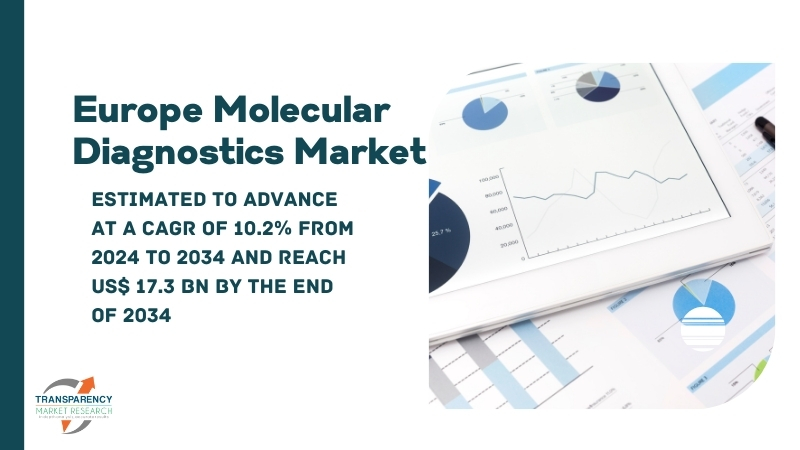
Key Findings of the Market Report
- Real-time PCR Systems lead the Europe molecular diagnostics market, driven by their widespread usage and versatility in diagnostic applications.
- Diagnostics laboratories lead the Europe molecular diagnostics market, serving as key hubs for disease testing and clinical analysis.
- Germany leads the Europe molecular diagnostics market, driven by advanced healthcare technology adoption and robust investment in research and development.
Europe Molecular Diagnostics Market Growth Drivers & Trends
- Rising prevalence of infectious diseases and cancer drives demand for molecular diagnostic tests.
- Advancements in technology enable faster and more accurate testing, enhancing patient care and treatment outcomes.
- Increasing adoption of personalized medicine drives demand for molecular diagnostics in targeted therapies.
- Growing emphasis on early disease detection and prevention fuels market expansion.
- Favorable regulatory environment and government support encourage investment in molecular diagnostic research and development.
Europe Molecular Diagnostics Market: Country Profile
- With a strong healthcare infrastructure and significant R&D investments, the U.K. boasts advanced molecular diagnostic capabilities. Leading companies like Roche Diagnostics and Abbott Laboratories dominate the market, offering a wide range of molecular assays for disease diagnosis and monitoring.
- France prioritizes healthcare innovation, driving demand for molecular diagnostics. Local companies like bioMérieux contribute to the market’s growth with innovative testing solutions. Government initiatives promote the adoption of molecular techniques for precision medicine and disease management.
- Spain’s molecular diagnostics market is growing rapidly, supported by increasing healthcare expenditure and a focus on preventive healthcare. Companies like Grifols and Oryzon Genomics play key roles in advancing molecular testing capabilities and expanding diagnostic options.
- Germany leads Europe in healthcare technology adoption, fostering a robust molecular diagnostics market. Key players like Siemens Healthineers and Qiagen innovate in test development and automation, catering to diverse clinical and research needs.
- Italy’s molecular diagnostics market benefits from a strong emphasis on healthcare research and innovation. Companies like DiaSorin and Menarini Diagnostics drive market growth with state-of-the-art diagnostic platforms and assays tailored to local healthcare demands.
Europe Molecular Diagnostics Market: Competitive Landscape
In Europe’s molecular diagnostics landscape, key players like Roche Diagnostics, Abbott Laboratories, and Siemens Healthineers dominate, offering a diverse array of innovative diagnostic solutions. These industry leaders leverage extensive R&D investments and strategic acquisitions to maintain their market positions, delivering high-quality assays and instruments for disease detection and monitoring.
Regional players such as Qiagen and bioMérieux contribute to market competitiveness through specialized offerings and localized support. With a focus on precision medicine and personalized healthcare, competition intensifies as companies strive to meet the evolving needs of healthcare providers and improve patient outcomes across Europe. Some prominent players are as follows:
- Agilent Technologies Inc.
- BD
- Bio-Rad Laboratories Inc.
- Danaher
- Eppendorf SE
- F. Hoffmann-La Roche Ltd.
- PerkinElmer Inc.
- Tecan Trading AG
- Thermo Fisher Scientific Inc.
- QIAGEN
Product Portfolio
- PerkinElmer delivers innovative solutions for life sciences, diagnostics, and applied markets. With a focus on detection and imaging technologies, PerkinElmer enables scientists and researchers to gain valuable insights into disease mechanisms, environmental impacts, and food safety, driving advancements in healthcare and sustainability worldwide.
- Tecan provides laboratory automation and liquid handling solutions for biopharmaceutical, diagnostics, and academic research sectors. Their versatile platforms and instruments streamline workflows, enhance productivity, and ensure reproducibility in genomics, proteomics, and drug discovery applications, empowering scientists to accelerate discoveries and improve human health.
Email Directly Here with Detail Information: sales@transparencymarketresearch.com
Europe Molecular Diagnostics Market: Key Segments
By Product
- LightCycler 480
- PCRmax Eco 48
- Applied Biosystems 7900HT
- QuantStudio Real-Time PCR
- ViiA 7 Real-time PCR
- C1000 Touch
- ABI StepOnePlus Real-time PCR
- 5ABI 7500
- AriaMx Real-time PCR System
- CFX Connect
- CFX384 Touch
- MiniOpticon
- Others
- epMotion
- Biomek
- Freedom EVO
- Tecan D300e Digital Dispenser
- Precision
- JANUS
- Others
- AutoMate Express
- QIAcube
- InnuPure
- VERSA
- Chemagic
- Others
By End User
- Hospitals
- Diagnostics Laboratories
- Academic & Research Institutes
- Pharmaceutical & Biotechnology Companies
By Country
- U.K.
- France
- Spain
- Germany
- Italy
Buy this Premium Research Report: https://www.transparencymarketresearch.com/checkout.php?rep_id=9434<ype=S
More Trending Reports by Transparency Market Research –
- Veterinary Molecular Diagnostics Market – The global veterinary molecular diagnostics market (수의학 분자진단 시장) is projected to advance at a CAGR of 7.9% from 2023 to 2031
- In Vitro Diagnostics Market – The global In vitro diagnostics market (체외진단 시장) is projected to expand at a CAGR of 5.3% during the forecast period from 2023 to 2031
About Transparency Market Research
Transparency Market Research, a global market research company registered at Wilmington, Delaware, United States, provides custom research and consulting services. Our exclusive blend of quantitative forecasting and trends analysis provides forward-looking insights for thousands of decision makers. Our experienced team of Analysts, Researchers, and Consultants use proprietary data sources and various tools & techniques to gather and analyses information.
Our data repository is continuously updated and revised by a team of research experts, so that it always reflects the latest trends and information. With a broad research and analysis capability, Transparency Market Research employs rigorous primary and secondary research techniques in developing distinctive data sets and research material for business reports.
Contact:
Transparency Market Research Inc.
CORPORATE HEADQUARTER DOWNTOWN,
1000 N. West Street,
Suite 1200, Wilmington, Delaware 19801 USA
Tel: +1-518-618-1030
USA – Canada Toll Free: 866-552-3453
Website: https://www.transparencymarketresearch.com
Email: sales@transparencymarketresearch.com
Follow Us: LinkedIn| Twitter| Blog | YouTube

© 2024 Benzinga.com. Benzinga does not provide investment advice. All rights reserved.
Homebuilder Lennar Reports Better-Than-Expected Q3 Results: Details
Lennar Corp LEN reported its third-quarter financial results after Thursday’s closing bell. Here’s a look at the details from the report.
The Details: Lennar reported quarterly earnings of $3.90 per share, which beat the analyst consensus estimate of $3.63 by 7.44%. Quarterly revenue clocked in at $9.416 billion, beating the consensus estimate of $9.164 billion and representing a 7.86% increase over the same period last year.
- New orders increased 5% to 20,587 homes.
- Lennar reported a backlog of 16,944 homes with a dollar value of $7.7 billion.
- Deliveries increased 16% to 21,516 homes.
- Lennar reported homebuilding operating earnings of $1.5 billion with gross margin on home sales of 22.5%.
- Average home price was $422,000 in the third quarter,
“We are pleased to report another solid quarter backed by an economic environment that remains very constructive for homebuilders. Employment was strong, housing supply remained chronically short due to production deficits of over a decade and demand was solid driven by strong household formation,” said Stuart Miller, executive chairman and Co-CEO of Lennar.
“Although affordability continued to be tested during the quarter, purchasers remained responsive to increased sales incentives, resulting in a 16% increase in our deliveries and a 5% increase in our new orders year over year,” Miller added.
Read Next: What Happened With SoFi Stock Today?
Outlook: Lennar sees fourth-quarter new orders in a range of 19,000 to 19,300 and deliveries between 22,500 and 23,000. The company expects the average sales price to be approximately $425,000.
What Else: The company will host a conference call at 11 a.m. ET Friday to discuss the results. BofA Securities analyst Rafe Jadrosich maintained Lennar with a Neutral rating and raised the price target from $171 to $190 before the print on Thursday.
LEN Price Action: According to Benzinga Pro, Lennar shares are down 3.36% in extended trading at $185.99 after gaining 2.13% in Thursday’s regular session.
Read Also:
Photo: Shutterstock
Market News and Data brought to you by Benzinga APIs
© 2024 Benzinga.com. Benzinga does not provide investment advice. All rights reserved.
Tesla, Nike, Alibaba, FedEx, Trump Media & Technology: Why These 5 Stocks Are On Investors' Radars Today
The U.S. stock market reached new heights today, following the Federal Reserve’s unexpected decision to cut interest rates for the first time in over four years. This bold move led to a surge in the S&P 500 and Dow Jones indices, reaching all-time highs of 5,700 and 42,000 points respectively. The market rally was primarily fueled by the “Magnificent Seven” tech giants, each recording daily gains ranging from 1.5% to 4.5%.
The Dow Jones Industrial Average closed 1.3% higher at 42,025.19, while the S&P 500 climbed 1.7% to 5,713.64. The Nasdaq surged 2.5% to 18,013.98.
These are the top stocks that gained the attention of retail traders and investors throughout the day:
Tesla Inc. TSLA
Tesla’s stock soared by 7.36% today, closing at $243.92. The electric vehicle maker’s shares hit an intraday high of $244.24 and a low of $232.13. The 52-week high and low for Tesla stand at $273.93 and $138.8 respectively. Tesla’s stock reached a two-month high following the Federal Reserve’s rate cut.
Nike Inc. NKE
Nike shares saw a slight increase of 0.10% today, closing at $80.98. The stock reached an intraday high of $83.12 and a low of $80.47. The company’s 52-week high and low are $123.39 and $70.75 respectively. Nike announced a CEO transition after the market close today, which led to a 9% jump in the company’s shares in after-hours trading.
Nike announced that longtime company veteran Elliott Hill will take over as president and CEO, effective October 14. Hill will also join the board of directors and the executive committee. Current president and CEO John Donahoe will retire from his role on October 13, but will stay on as an advisor until January 31, 2025, to help with the transition.
Alibaba Group Holding Ltd. BABA
Alibaba’s stock rose by 4.82% today, closing at $88.49. The shares reached an intraday high of $88.57 and a low of $86.95. The 52-week high and low for Alibaba are $90.46 and $66.63 respectively. The company announced the launch of over 100 new AI models, which led to a 4% rise in its shares during premarket trading.
FedEx Corp. FDX
FedEx shares increased by 0.74% today, closing at $300.39. The stock hit an intraday high of $308 and a low of $297.87. The 52-week high and low for FedEx are $313.84 and $224.69 respectively. The company reported its first-quarter earnings after the market close today, missing revenue and EPS estimates and lowering its guidance.
Trump Media & Technology Group Corp. DJT
Trump Media & Technology Group’s shares fell by 5.89% today, closing at $14.7. The stock reached an intraday high of $15.37 and a low of $14.56. The 52-week high and low for the company are $79.38 and $14.56 respectively. The company’s shares traded lower as lockup restrictions preventing certain insiders from selling shares are set to expire.
Image via Shutterstock
Prepare for the day’s trading with top premarket movers and news by Benzinga.
Read Next:
This story was generated using Benzinga Neuro and edited by Shivdeep Dhaliwal
Market News and Data brought to you by Benzinga APIs
© 2024 Benzinga.com. Benzinga does not provide investment advice. All rights reserved.
Rezolute Reports Fourth Quarter and Full Year Fiscal 2024 Financial Results and Provides Business Update
FDA lifts partial clinical holds on ersodetug for the treatment of congenital HI; Phase 3 sunRIZE study to proceed in the U.S.
Phase 3 study for ersodetug for the treatment of tumor HI expected to commence in the first half of 2025
REDWOOD CITY, Calif., Sept. 19, 2024 (GLOBE NEWSWIRE) — Rezolute, Inc. RZLT (“Rezolute” or the “Company”), a late-stage biopharmaceutical company dedicated to developing transformative therapies for rare diseases with serious unmet needs, today reported financial results and provided a business update for the fourth quarter and full fiscal year ended June 30, 2024.
“We are thrilled to close out the year with FDA alignment to advance ersodetug in two Phase 3 rare disease programs for the treatment of hypoglycemia resulting from congenital and acquired forms of hyperinsulinism,” said Nevan Elam, Chief Executive Officer and Founder of Rezolute. “The Phase 3 sunRIZE study remains on track for ex-U.S. participant enrollment and we expect U.S. enrollment to begin in the first part of 2025. We look forward to progressing both Phase 3 studies and remain excited at the prospect of ersodetug as a best-in-class treatment for hyperinsulinism based on the success we’ve seen to date.”
Recent Pipeline Progress and Anticipated Milestones
Congenital HI
- U.S. Food and Drug Administration (FDA) removal of partial clinical holds on ersodetug, a potential treatment for hypoglycemia caused by congenital HI, and authorization of U.S. inclusion in the ongoing Phase 3 sunRIZE study.
- Commencing study start-up activities in the U.S. with the goal of including U.S. participants in early 2025.
- Ex-U.S. patient enrollment in sunRIZE is on track.
- Topline results from sunRIZE expected in the second half of 2025.
Tumor HI
- FDA clearance of Investigational New Drug (IND) application for Phase 3 registrational study for ersodetug for the treatment of hypoglycemia caused by tumor HI.
- Start-up activities are ongoing for the study, which will be primarily conducted in the U.S., with patient enrollment anticipated to begin in the first half of 2025.
- Topline results expected in the second half of 2026.
- Several insulinoma patients have been treated with ersodetug in the Expanded Access Program (EAP).
Diabetic Macular Edema (DME)
- Announced positive topline results in May of 2024 from the Phase 2 proof-of-concept study of RZ402 in patients with DME.
- The study met primary endpoints, demonstrating good safety and tolerability, and a significant reduction in central subfield thickness (CST) in the Study Eye at all RZ402 dose levels compared to placebo (up to approximately 50 micron improvement).
- We are actively engaged in conversations with potential partners to take RZ402 into further development.
Fourth Quarter and Full Year Fiscal 2024 Financial Results
Cash, cash equivalents and investments in marketable securities were $127.1 million as of June 30, 2024, compared with $118.4 million as of June 30, 2023.
Research and development (R&D) expenses were $19.1 million for the fourth quarter of fiscal 2024, compared with $10.9 million for the same period a year ago. Full fiscal year 2024 R&D expenses were $55.7 million, compared to $43.8 million in fiscal year 2023. The increase from fiscal year 2023 to fiscal year 2024 was primarily due to (i) increased expenditures in clinical trial activities, (ii) manufacturing costs for ersodetug, (iii) milestone payments due to license agreement partners, and (iv) higher employee-related expenses, which included employee compensation and stock-based compensation.
General and administrative (G&A) expenses were $4.0 million for the fourth quarter of fiscal 2024, compared with $3.3 million for the same period a year ago. Full fiscal year 2023 G&A expenses were $14.7 million, compared to $12.2 million in fiscal year 2023. The increase was primarily attributable to employee-related expenses due to increased headcount and professional fees.
Net loss was $23.0 million for the fourth quarter of fiscal 2024 compared with a net loss of $12.7 million for the same period a year ago. Full year fiscal 2024 net loss was $68.5 million compared to net loss of $51.8 million for the fiscal year 2023.
About Ersodetug
Ersodetug is a fully human monoclonal antibody that binds to a unique allosteric site on insulin receptors to counteract the effects of insulin receptor over-activation by insulin and related substances (such as IGF-2), thereby improving hypoglycemia in the setting of hyperinsulinism (HI). Because ersodetug acts downstream from the pancreas, it has the potential to be universally effective at treating hypoglycemia due to any form of HI.
About sunRIZE
The Phase 3 sunRIZE study is a multi-center, randomized, double-blind, placebo-controlled, parallel arm study designed to evaluate the efficacy and safety of ersodetug in patients with congenital HI who are experiencing poorly controlled hypoglycemia. Participants between the ages of 3 months to 45 years old are eligible to participate. The study is enrolling up to 56 participants in more than a dozen countries around the world.
About Rezolute, Inc.
Rezolute is a late-stage rare disease company focused on significantly improving outcomes for individuals with hypoglycemia caused by hyperinsulinism (HI). The Company’s antibody therapy, ersodetug, is designed to treat all forms of HI and has shown substantial benefit in clinical trials and real-world use for the treatment of congenital HI and tumor HI. For more information, visit www.rezolutebio.com.
Forward-Looking Statements
This release, like many written and oral communications presented by Rezolute and our authorized officers, may contain certain forward-looking statements regarding our prospective performance and strategies within the meaning of Section 27A of the Securities Act and Section 21E of the Securities Exchange Act of 1934, as amended. We intend such forward-looking statements to be covered by the safe harbor provisions for forward-looking statements contained in the Private Securities Litigation Reform Act of 1995 and are including this statement for purposes of said safe harbor provisions. Forward-looking statements, which are based on certain assumptions and describe future plans, strategies, and expectations of Rezolute, are generally identified by use of words such as “anticipate,” “believe,” “estimate,” “expect,” “intend,” “plan,” “project,” “seek,” “strive,” “try,” or future or conditional verbs such as “could,” “may,” “should,” “will,” “would,” or similar expressions. These forward-looking statements include, but are not limited to statements regarding the fourth quarter and fiscal year financial results of Rezolute, the full year financial results of Rezolute, the ersodetug Expanded Access Program, ersodetug as a sunRIZE Phase 3 study, the ability of ersodetug to become an effective treatment for congenital hyperinsulinism, the effectiveness or future effectiveness of ersodetug for the treatment of congenital hyperinsulinism, statements regarding clinical trial timelines for ersodetug, the RZ402 study, the ability of RZ402 to become an effective treatment for diabetic macular edema, the effectiveness or future effectiveness of RZ402 to become an effective treatment for diabetic macular edema, and statements regarding clinical trial timelines for RZ402. Our ability to predict results or the actual effects of our plans or strategies is inherently uncertain. Accordingly, actual results may differ materially from anticipated results. Readers are cautioned not to place undue reliance on these forward-looking statements, which speak only as of the date of this release. Except as required by applicable law or regulation, Rezolute undertakes no obligation to update these forward-looking statements to reflect events or circumstances that occur after the date on which such statements were made. Important factors that may cause such a difference include any other factors discussed in our filings with the SEC, including the Risk Factors contained in the Rezolute’s Annual Report on Form 10-K and Quarterly Reports on Form 10-Q, which are available at the SEC’s website at www.sec.gov. You are urged to consider these factors carefully in evaluating the forward-looking statements in this release and are cautioned not to place undue reliance on such forward-looking statements, which are qualified in their entirety by this cautionary statement.
Contacts:
Rezolute, Inc.
Christen Baglaneas
cbaglaneas@rezolutebio.com
508-272-6717
LHA Investor Relations
Tirth T. Patel
tpatel@lhai.com
212-201-6614
| Rezolute, Inc. | |||||||||||||||
| Condensed Consolidated Financial Statements Data | |||||||||||||||
| (in thousands, except per share data) | |||||||||||||||
| Three Months Ended | Year Ended | ||||||||||||||
| June 30, | June 30, | ||||||||||||||
| 2024 | 2023 | 2024 | 2023 | ||||||||||||
| Condensed Consolidated Statements of Operations Data: | |||||||||||||||
| Operating expenses: | |||||||||||||||
| Research and development | $ | 19,089 | $ | 10,933 | $ | 55,743 | $ | 43,813 | |||||||
| General and administrative | 4,013 | 3,305 | 14,680 | 12,177 | |||||||||||
| Total operating expenses | 23,102 | 14,238 | 70,423 | 55,990 | |||||||||||
| Loss from operations | (23,102 | ) | (14,238 | ) | (70,423 | ) | (55,990 | ) | |||||||
| Non-operating (expenses) income, net | 126 | 1,510 | 1,964 | 4,203 | |||||||||||
| Net loss | $ | (22,976 | ) | $ | (12,728 | ) | $ | (68,459 | ) | $ | (51,787 | ) | |||
| Basic and diluted net loss per common share | $ | (0.44 | ) | $ | (0.25 | ) | $ | (1.33 | ) | $ | (1.01 | ) | |||
| Shares used to compute basic and diluted net loss per common share | 52,235 | 51,410 | 51,465 | 51,188 | |||||||||||
| June 30, | June 30, | ||||||||||||||
| 2024 | 2023 | ||||||||||||||
| Condensed Consolidated Balance Sheets Data: | |||||||||||||||
| Cash and cash equivalents | $ | 70,396 | $ | 16,036 | |||||||||||
| Investments in marketable debt securities | 56,741 | 102,330 | |||||||||||||
| Working capital | 119,047 | 99,710 | |||||||||||||
| Total assets | 132,737 | 123,721 | |||||||||||||
| Accumulated deficit | (329,444 | ) | (260,985 | ) | |||||||||||
| Total stockholders’ equity | 121,003 | 116,172 | |||||||||||||

© 2024 Benzinga.com. Benzinga does not provide investment advice. All rights reserved.




